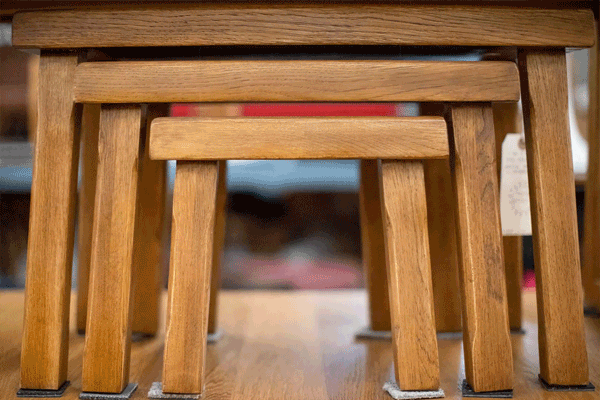Smart finds in used goods
Buying used merchandise is a topic that can prompt strong opinions. That’s because buying secondhand items can turn out to be a good deal or a bad one.
But being smart about buying previously owned items can be a key to getting and keeping your financial life on track. These days, traditional outlets for used items, including garage sales, yard sales, flea markets, thrift stores and newspaper classified ads, are augmented by such online options as auction site EBay.com and Craigslist.com.
Here are suggestions to help decide whether something is worth buying used instead of new:
Savings: Buying used usually means accepting a downgrade from brand-new quality and an element of risk because the item typically cannot be returned to a retailer or manufacturer. So the price difference between buying used and buying new must be large enough to compensate you for taking the risk and accepting reduced quality.
Buying quickly depreciating items can be the best bargains: Their resale prices will be significantly lower soon after the initial purchase. Automobiles are the prime example. A new car can lose 30% of its value in the first year. If you can swoop in during the second or third year to buy a lightly used car and avoid the depreciation hit, you can save thousands of dollars.
Time-share vacations are another example. A new time-share might cost $15,000, whereas one bought from someone desperate to dump one could cost a fraction of that.
Ewww factor: Buying some items used might make you squeamish. Undergarments and mattresses are examples. Different people will draw the line at different types of purchases. Lingerie might be a definite no, but a secondhand pair of jeans might be OK.
Used quality: Some items are functionally no different used than new. Books, music CDs, video games and some sports equipment, as long as they’re not damaged, function the same way used as the day they were purchased new.
Life span: Avoid items with short life spans. For example, an older-model ink-jet printer might be cheap when purchased used, but you may no longer be able to find ink cartridges for it. Many items with rapidly evolving technology would fall into this category.
Length of use: Ask yourself how long you’re likely to use the item. The shorter the use, the better deal it is to buy used. Children’s clothing is a great item to buy used because you know the child will outgrow the garment quickly. Toys also can be a good buy, considering many youngsters’ short attention spans and quickly evolving interests.
Uncertainty of use: Avoid buying new if you are unsure whether you will get a lot of use from the item. If your child starts taking lessons on a musical instrument, it is best to buy used until you are certain he or she will continue for more than a few months.
Likewise, consider buying used when taking up new hobbies, such as golf, skiing or camping, that require expensive equipment. You can upgrade later, when you are ready to make a commitment to the activity. You’ll also be more knowledgeable about what type of equipment you’ll need.
Quality required: Nobody needs top quality for every purchase. Out-of-sight storage shelving or bookshelves for the basement can be purchased used, assuming the units are sturdy. If an item’s aesthetic appeal is low on the list of priorities, it might be a good candidate for buying used.
Complexity: The fewer moving parts, the better when buying used. Less can go wrong. In buying tools, a used hammer or wrench set is low risk, while buying a used power saw or hedge trimmer is riskier. Exercise dumbbells are a better bet than a treadmill. Buying a used computer is a worse idea than buying a used patio set. An exception would be buying a complex item that is factory refurbished and comes with a warranty.
Safety: Maintain a strong bias against used items that could be a hazard to adults and children. For these items, price is less a concern than the quality of the item. If you have any doubt about the safety of a child’s car seat or playpen, for example, consider buying new.
Seller: If you know the seller, perhaps a relative, friend or neighbor, you might have more confidence that the product has been well-maintained.
Budget: Consider buying more used items if you are cash-strapped or trying to get out of debt. It can provide some breathing room for a tight household budget. And for a home business on a limited budget, buying used office furniture and equipment can help the bottom line.
Saving money is the upside of buying used. Among the downsides are that shopping for used items often requires more time and effort, especially if done in person instead of online. And you are bound to end up with a defective item once in a while, which means the money was wasted. Also, some people are sucked into the thrill of the bargain hunt and end up buying used items they don’t need.
But if you can buy used items wisely, you’ll often receive good value for your money.
Gregory Karp is a personal finance writer for the Morning Call, a Tribune Co. newspaper in Allentown, Pa. E-mail him at yourmoney@tribune.com.


